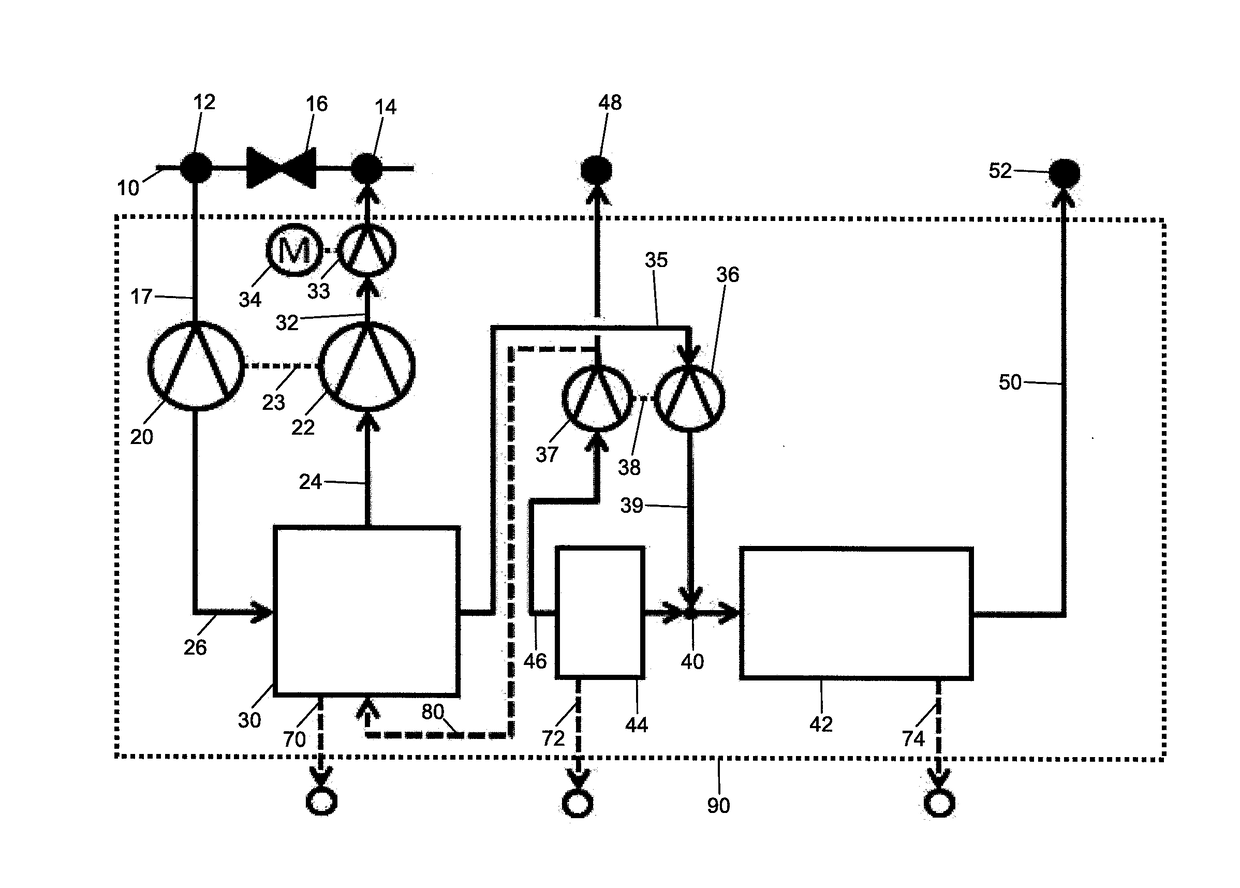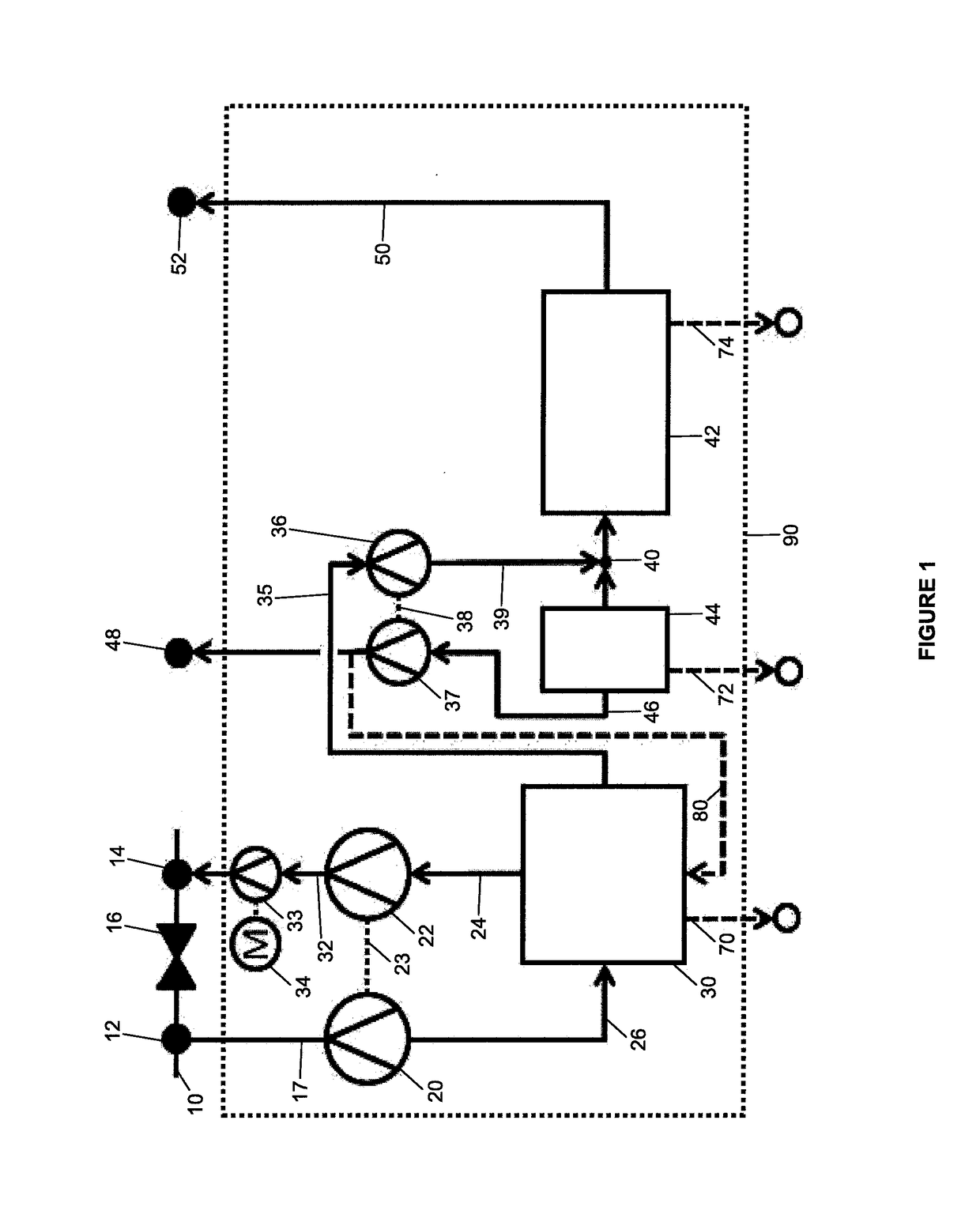Device for the removal and separation of helium isotopes from natural gas
- Summary
- Abstract
- Description
- Claims
- Application Information
AI Technical Summary
Benefits of technology
Problems solved by technology
Method used
Image
Examples
Embodiment Construction
[0074]Before going into a detailed description, it is noted that the implementation described is not to limited to the separation of Helium isotopes from Compressed Natural Gas alone, and therefore, although this implementation is shown and described for explanation purposes as applied to the separation of Helium-3 and Helium-4 present in Compressed Natural Gas, it can be implemented to separate other isotopes of other minority lightweight gasses contained in a heavier carrier gas present in larger proportions, and, if not needed to separate the isotopes of some light gas, the device can be limited to the first cascade of separation of the light minority gas from the heavy majority gas, using the recycles and feeds and withdrawals proposed for this device, or, if the minority light gas is already separated from the heavier carrier gas, the device may be limited to separating the isotopes of the light gas, using the recycles and feeds and withdrawals proposed for this device.
[0075]Th...
PUM
 Login to View More
Login to View More Abstract
Description
Claims
Application Information
 Login to View More
Login to View More - R&D
- Intellectual Property
- Life Sciences
- Materials
- Tech Scout
- Unparalleled Data Quality
- Higher Quality Content
- 60% Fewer Hallucinations
Browse by: Latest US Patents, China's latest patents, Technical Efficacy Thesaurus, Application Domain, Technology Topic, Popular Technical Reports.
© 2025 PatSnap. All rights reserved.Legal|Privacy policy|Modern Slavery Act Transparency Statement|Sitemap|About US| Contact US: help@patsnap.com



